
From 2010, Adam Kuczek has been working as a freelance concept artist and matte painter for entertainment industry. Film projects he contributed to include major sci-fi features like 'Cloud Atlas' (2012) or 'Jupiter Ascending' (2015) as well as several independent productions. He helped to develop visual looks for advertising campaigns, cinematics, upcoming games and ground-breaking virtual reality platforms. His artworks have been featured in high quality art books like Ballistic's 'Exposé 9', 'Exposé 11' and 'Matte Painting 3'. He is currently working as a lead concept artist on 'The Universe of Seven'.
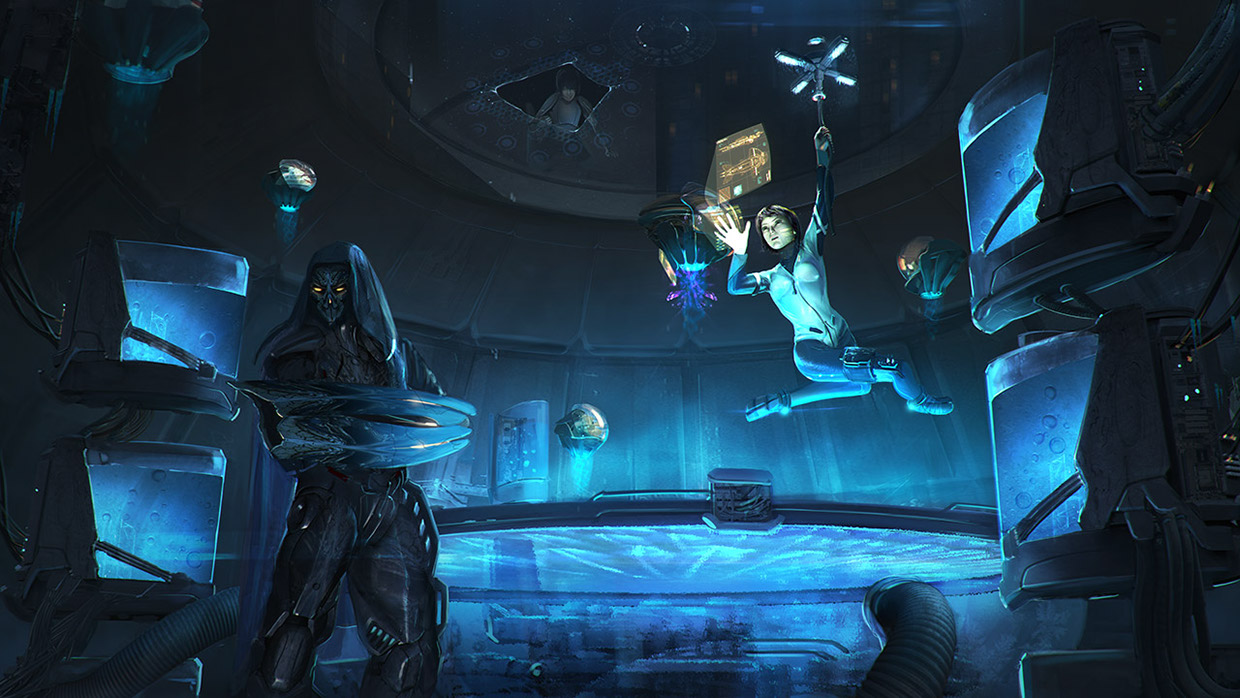 |
| (Theft - By A.Kuczek) |
Adam has been nice enough to grant us an interview, lets learn more about this awesome creator who is also a Shade 3D user !
Shade3D. Hi Adam, when and how did you choose the artistic path?
Adam Kuczek. I was one of those kids that had more sketches and drawings in their school notebooks
than the actual notes from the classes. Art was obviously my all-time favorite subject.
I think, as a child, I was inspired by the movies I saw at cinemas, the original ‘Star
Wars’ trilogy, ‘The Neverending Story’ or ‘The Willow’. Naturally, as a child, I had
no idea that you can actually design for films as a career path; even as a teenager it
never really occurred to me. At that time, in Poland, there were no materials about
things like concept art or matte painting. Back then and even at a time when I was
entering college, the only known art-related paths were fine art studies or architecture.
Digital graphics was just starting out and there was no real school with focus on
design. Art has never been considered a ‘real’ career anyway, unless you wanted to
teach it at school or sell your paintings on a sidewalk. I figured that architecture,
although heavily relying on mathematics was the next best thing. I passed the exams
but after a year spent at the faculty, I decided to move on and find something much
less structured and far more creative. I knew that there must be another way.
Eventually, I graduated with a degree in English Philology and after a few years I
decided to go to Asia, as I was always fascinated with the Far East. At the time, I was
toying with some 2D and 3D software that I’ve discovered thanks to CDs sold with
computer magazines. It was only after I ended up in China in 2007 that I eventually
discovered concept art and found out people can actually make a living out of it. As a
foreign teacher at Chinese university, I had plenty of time between classes, so I
started training myself more seriously, studying Photoshop and 3D. By 2010, I put
together my first online portfolio and just a few days later I got my first client. That
how it’s started for me.
S. What are your main influences?
A. I would say there are two factors here: influence and inspiration. Influence would be
something that defines the themes you choose. I believe it happens very early in your
life. In my case, I prefer sci-fi what can be obviously tracked back to movies, comic
books and cartoons I watched as a child. It’s more less unconscious process; it shapes
the future artist in you, turns you into a storyteller who is looking for ways and means
to tell these stories.
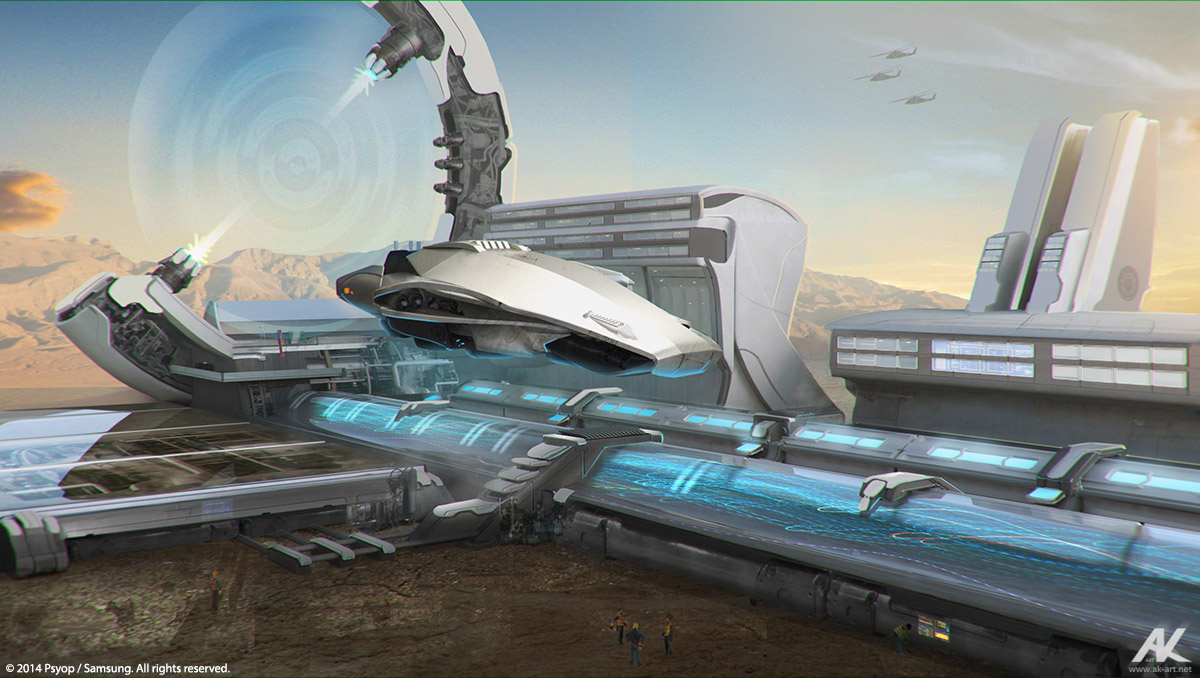
On the other hand, finding an inspiration is rather a conscious process. Nowadays,
with the Internet, inspiring things are all around you. It’s never been easier to get that
art book you heard about or watch a live stream from a conference happening half a
way around the globe. There are a lot of art sites providing inspiration and insight into
what’s popular at the moment. Thanks to the Internet, you can also choose to be an
inspiration to others.
S. Could you describe a “regular” working day of your artist's life?
A. I usually plan my day ahead, so I never start my work thinking ‘OK, so now
what…?’. When you’re on a project, especially a long-term one, you need to keep
track of what you have done so far, what needs to be adjusted and what is expected
next. I always try to do the most creative and design-intense work at the beginning of
my workday, for example, to establish the painting or to come up with an interesting a
design. The rest of the day is then set and I can relax, knowing that the most difficult
part is done and all what’s left is to refine the whole thing. It’s important to stay
focused and devote all your energy at the beginning, when you’re still fresh. It
happens that creative artists need to work long hours (although, it’s usually due to
their poor time management) but the longer you work, the more difficult it is to come
up with interesting ideas and good solutions. You just turn into a machine trying to
get to the finish line.
It may not look like it for an observer but creative process can be really exhausting,
especially on bigger projects that can last for months. Coming up with good ideas
continuously, day after day, is not easy. That’s why things like proper time
management, collecting resources, setting milestones, efficient personal pipeline and
right pace are crucial. You may have a lot of enthusiasm and great ideas at the
beginning but after many weeks of hard work, it may feel like you’ve enrolled in a
factory. If you’re not careful, you may get burned out.
S. We have seen your works in blockbusters such as Jupiter Ascending or Cloud Atlas,
when you have to work on such big projects, what is your regular approach?
A. It always starts with the brief you get from the client, which can be very loose (in the
initial “blue sky” stage) or very precise (during refinement). You may also work with
assets created by other artists, if certain elements or style have already been
established, and try to find the best way to augment and expand these ideas. It’s an
important skill; otherwise the concepts may look disjointed, like they belong to
different stories.
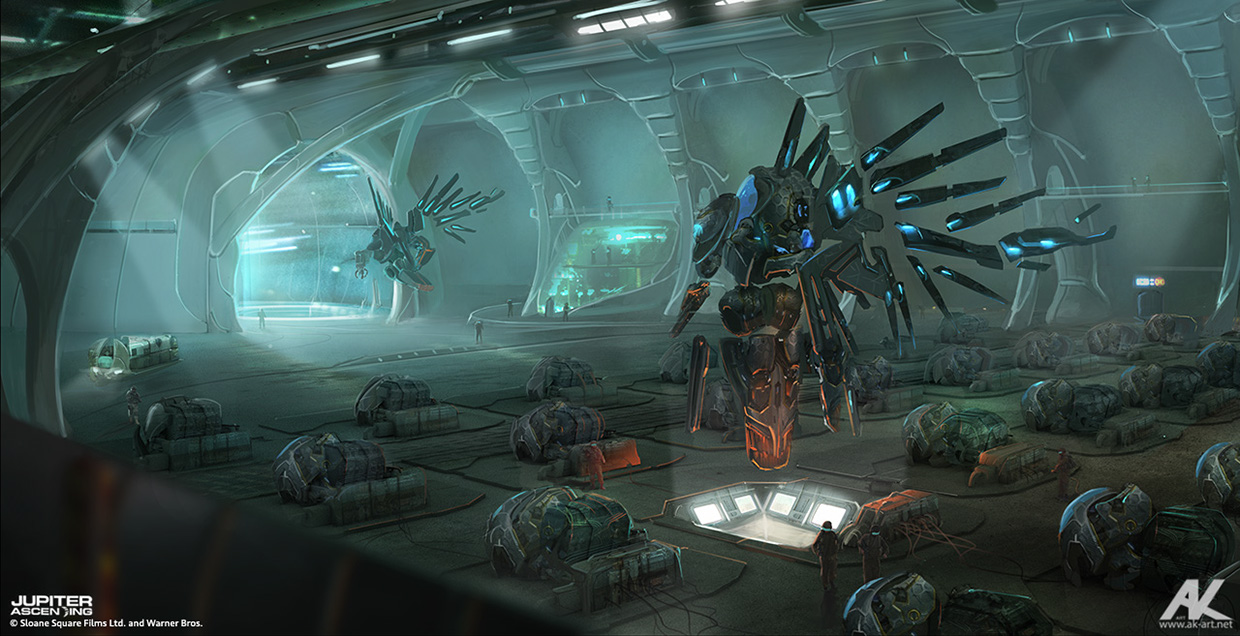
From the technical point of view, my personal pipeline may differ slightly from
project to project. It also changes occasionally with the appearance of new software,
which allows doing certain things easier or faster. The beginning, however, is almost
always a pen on a paper. Some artists work using only digital media but I always like
to draw and sketch in a simplest way possible. You don’t need to worry about
resolution, brush type, layers, etc. It just feels the most natural and that’s how I
generate most of my initial ideas. The next step depends on the subject and the
amount of time available. I may scan the drawing into Photoshop and go from there,
although nowadays, I usually start directly in 3D, in software like Shade or ZBrush
use it along Photoshop until the work is done. My style is typically a mixture of 3D,
photo elements and digital painting.
Sometimes, for a change, I may try some unusual software or completely new
technique. Changing your standard approach may help you to come up with shapes
and designs you wouldn’t normally end up with. As an example, in order to come up
with unusual and unique textures, I can play with various fractal generators, tweaking
the parameters until the shapes look like something I can use for textures or
silhouettes and far from anything I would be able to create ‘manually’ and
consciously.
S. When you start a project, how and when do you decide to start using 3D and how do
you determine the part it should take in your composition?
A. I start with 3D pretty early, once I have a general idea of what I want. It’s a great tool
for creating layout of your scene, since you can look at it from any angle and you can
move the stuff freely all over the place. I’m often asked to conceptualize entire
environments, with characters, vehicles, props, etc. What would be a daunting task on
a paper, in 3D is a breeze.
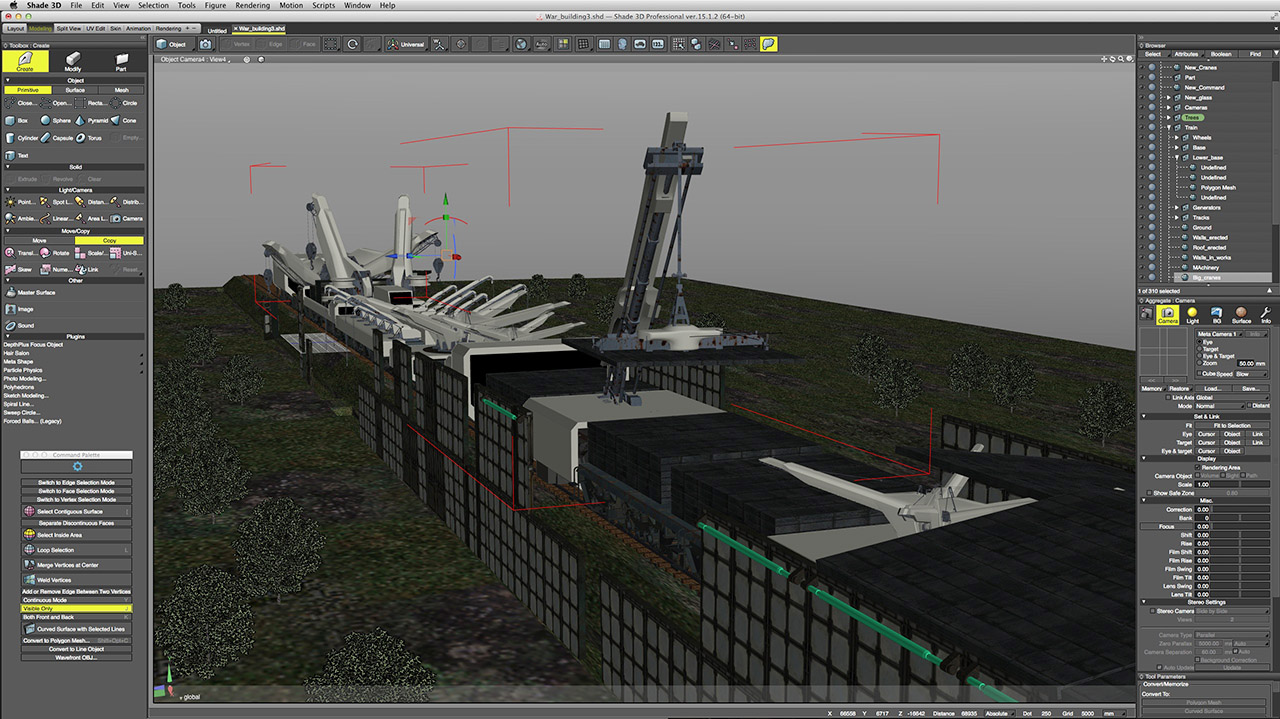
3D cameras are very convenient as well. I often get client’s specs that outline what
should be included in the frame, which may prove to be tricky composition-wise if
there are a lot of elements. 3D cameras allow me to play with focal length and
position/scale of each asset until I find a perfect framing. I can’t imagine not using 3D
for this stage.

S. How did you become a Shade 3D user?
I first heard about Shade while browsing through some anime art. Somebody used it
for crating a very tight outline render, which caught my eye. Surprisingly, getting a
great looking outline render is still a difficult task for most 3D apps out there. Some
time later, I tested Shade myself and found out it has a lot of useful features. It’s super
intuitive interface made me feel “at home” just after a day of playing with it.
S. What do you like about Shade 3D?
A. It’s very easy to use but at the same time, very powerful. There are several areas I like
personally. First of all, it’s very robust and can handle a high poly-count easily. I can
import, for example, a heavy sculpt from ZBrush and still be able to tweak it or
duplicate it. Recently, I needed to create a marching army for a complex concept
piece. I imported a lot of assets and ended up with a scene of over 22 million
polygons. Shade had no problem with managing and rendering such a crowd.
I can import a lot of formats to work with, which is another neat feature. Materials are
great – ability to control all aspects of the shader with a bunch of sliders, all gathered
in one place, is very convenient for a concept work - it allows you to come up with
unique looking surfaces really fast. What else? Great displacement, replicators,
volumetrics, custom shortcuts for virtually any command… The list goes on.
S. What would you like to see in Shade 3D's future?
A. It would be great to see some additional options for polygonal modeling tools that
would automate and streamline the creation process. Additionally, it would be great if
Shade had an ability to use custom pie-menus - that would really speed up the work
without the necessity to rely on many keyboard shortcuts.
S. As you know, Shade3D Co.,Ltd. is a Japan based company, any particular things
you like about Japan that could have been of some influence on your work?
A. Well, like I mentioned at the beginning, I’ve always been interested in Far East, in
fact, especially in Japan. I loved Japanese computer games (Final Fantasy!), watched
a lot of Japanese shows and even listened to J-Pop. In fact, I studied Japanese for a
few years back in Poland and passed a couple of Japanese language exams, like
Nihon-go Noryoku Shiken. Originally, I wanted to come and teach English in Japan
but in the end it wasn’t possible to arrange. So, I came to China instead, and have
lived here for over 8 years at this point. But I hope to visit Japan if there is an
opportunity.
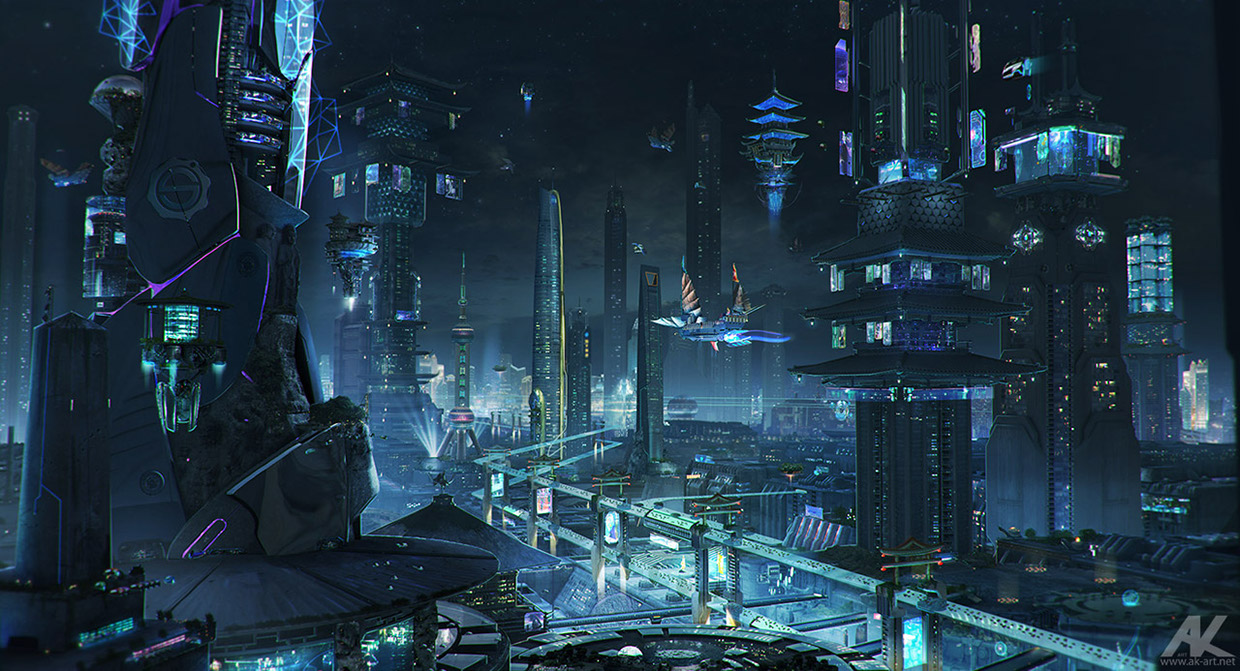
Regarding Asian influence, all you need to do is to check my portfolio. A lot of work
I’ve done over the years (starting with ‘Cloud Atlas’ and Neo-Seoul) has
Japanese/Chinese elements in it. Apart from personal interest, it’s almost a
requirement for sci-fi/cyberpunk genre - many cult stories, like ‘Ghost in the Shell’ or
‘Akira’ take place in Japanese cities or have elements typically associated with Asian
culture.
S. If you had to give only one piece of advice to young people who are trying to
succeed in your industry, what would it be?
A. I think it depends what they are aiming at. If you want to work as a concept artist for a
particular studio – create a portfolio in a style suitable for that studio (but not fan art –
you have to show you can come up with new stuff). If you want to work as a
freelancer, you have to make yourself as attractive as possible to your potential client.
That means you have to be versatile. Know various tools and techniques, so you can
tackle anything the client throws at you. They would like to have a refined 3D model
you used as a base in the concept? Shouldn’t be a problem. They’d like to have some
storyboards for the sequence? Know how to make them and present them. They
would like to see some movement in the scene? Learn how to animate cameras and
objects, how render it all out and export as a clip. The more you know, the more
valuable you become since the client doesn’t need to look for additional people to
complete the project. Nowadays, for freelancers, generating typical concept artworks
are just one facet of the job.
S. Any exciting projects coming soon that we can know about?
A. Since 2014, I’ve been involved with ‘The Universe of Seven’, a new upcoming
franchise based on games and books that has been announced just recently. The
universum is a mixture of fantasy and technology, a bit in ‘Final Fantasy’ style but
with a lot of innovative ideas and very original gameplay. The main part of U7 will be
‘Fall of Kyos’, an intense RPG shooter. My job, as a lead concept artist, is to define
the visual look of the game: it’s main locations, characters, vehicles and props. I also
provide many storyboards, sketches and layouts for the development team working on
translating them into actual game locations.
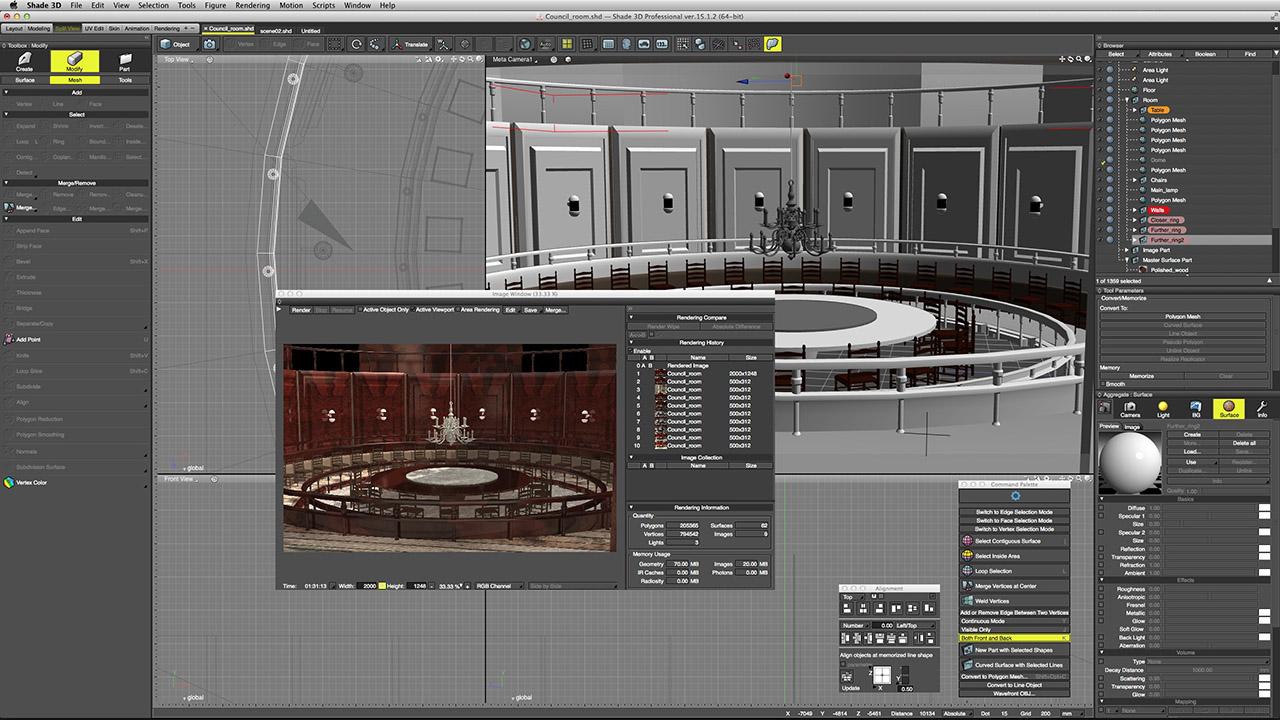
I picked up Shade while working on the project and already used it to create a solid
3D base for a number of concepts. Undoubtedly, it will remain a strong addition to
my personal pipeline while developing the world of U7. You can keep track of the
latest artworks and news via project’s official website: www.uof7.com
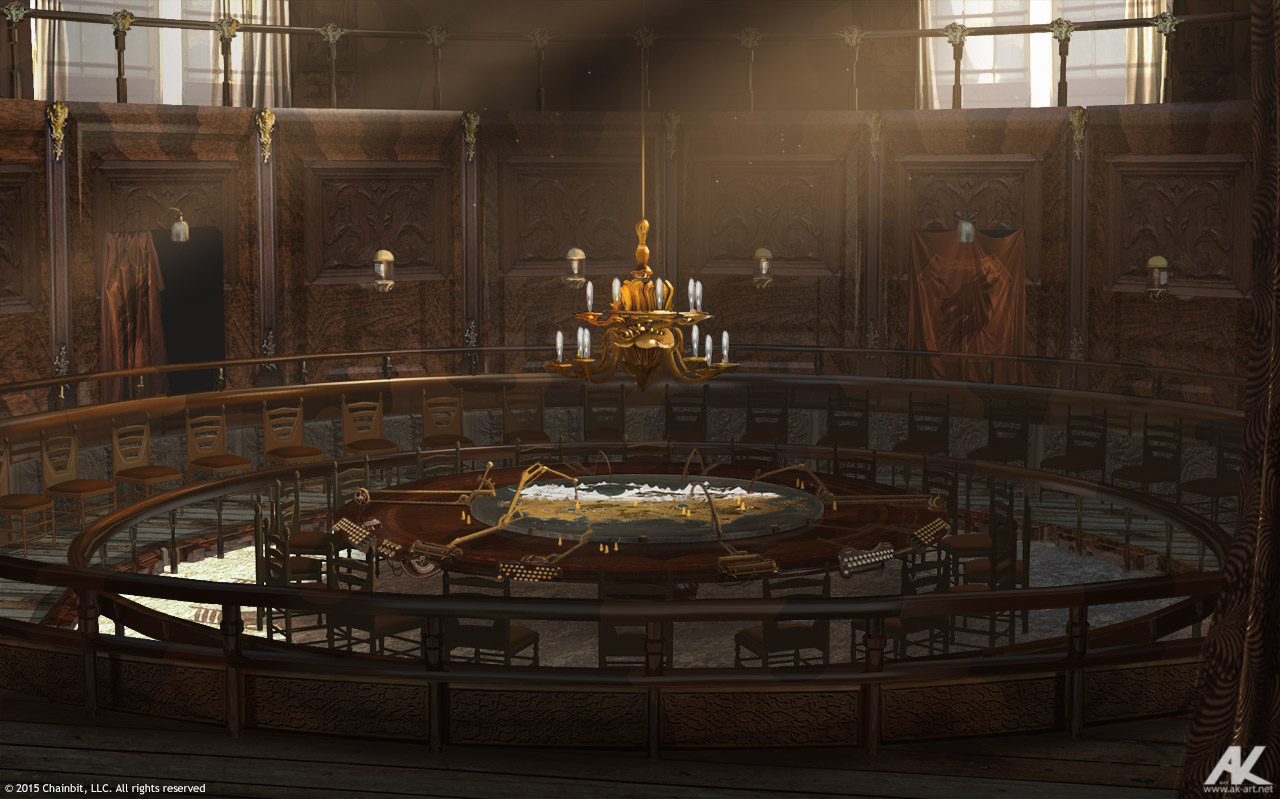
Another project where I use Shade is my personal IP ‘Razordome’, which will be
released as an interactive artbook. For this project, I use mainly Shade’s versatile toon
shader and rendering options, since many artworks I’m working on will have a
specific manga/comic book-like style. Initially, I thought I’ll have to draw all of them
by hand until I played with the toon shader and discovered how many visual styles
I’m able to generate with it. I hope to show you some of the artworks soon.
S. Thank you very much for your time Adam (and your great Shade 3D Walkthrough
videos!), any message for the Shade 3D team?
A. Keep up the good work in making Shade an awesome tool. As far as the tutorials are
concerned – you’re welcome. I will definitely prepare more as soon as I manage to
find a while. There are still many things I’d like to talk about!
Interview: Lauri Caravaca


